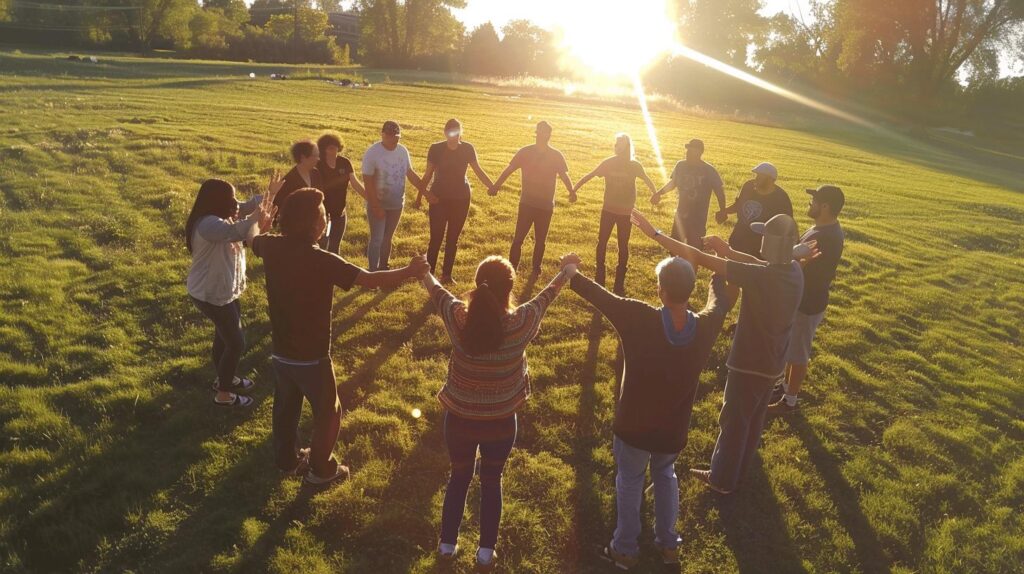Is hope merely a fleeting emotion, or can it be intentionally developed to enhance our lives? The practice of hope development suggests the latter. Integrating core components like pathways and agency thinking, this methodology emphasizes resilience and well-being. Discover how positive psychology underpins these efforts, and learn the fundamental theories and principles behind hope development practice. Uncover the secrets to unlocking your potential by focusing on hope, and start building a more resilient and fulfilling life today.
Understanding Hope Development Practice
Hope Development Practice (HDP) is a methodology that integrates hope as a core component in developmental strategies. One of the foundational theories underpinning HDP is Snyder's Hope Theory. This theory identifies two crucial elements: pathways thinking and agency thinking. Pathways thinking involves the ability to find multiple routes to achieve goals, while agency thinking is the motivational aspect that drives individuals to pursue those goals. Both components are essential as they provide a structured approach to understanding and nurturing hope.
Positive psychology is another critical pillar supporting hope development practice. This field of psychology focuses on enhancing individual well-being and resilience. By emphasizing strengths and positive attributes, positive psychology encourages a more hopeful outlook on life. Techniques from positive psychology, such as gratitude exercises and strength-based interventions, are often incorporated into HDP to foster a more resilient and hopeful mindset. These practices aim to enhance overall well-being and help individuals navigate life's challenges more effectively.
- Pathways Thinking
- Agency Thinking
- Resilience Building
- Well-being Enhancement
- Goal Setting
The role of positive psychology in hope development practice cannot be overstated. Positive psychology provides the tools and theoretical foundation that enhance the effectiveness of HDP. By focusing on resilience and well-being, positive psychology ensures that hope development is not just about setting and achieving goals but also about improving overall quality of life. This holistic approach makes HDP a powerful methodology for fostering long-lasting hope and resilience.
Practical Applications of Hope Development Practice

Schools have increasingly adopted hope-based curricula to enhance student motivation and achievement. These educational programs incorporate activities and lessons designed to build pathways thinking and agency thinking in students. For example, students might engage in goal-setting exercises where they identify multiple routes to achieve their academic and personal goals. Teachers also use positive affirmations and resilience training to boost students' confidence and ability to overcome challenges. The result is a more motivated and hopeful student body, better equipped to face academic pressures and life challenges.
Community programs aimed at fostering hope focus on marginalized groups who may face social, economic, or emotional challenges. These initiatives often include workshops and group activities that promote resilience and well-being. For instance, community centers might offer goal-setting workshops and mindfulness practices to help individuals develop a more hopeful outlook. Peer support groups are another common feature, providing a space for participants to share experiences and build a supportive network. These programs aim to empower individuals, making them more resilient and hopeful in their daily lives.
- Goal Setting Workshops
- Positive Affirmations
- Vision Board Creation
- Resilience Training
- Mindfulness Practices
- Peer Support Groups
Personal development techniques are another crucial aspect of hope development practice. Individuals can engage in activities like journaling, visualization, and gratitude practices to enhance their sense of hope and agency. These exercises are designed to help people identify and pursue meaningful goals, fostering a hopeful and resilient mindset. By incorporating these techniques into their daily routines, individuals can improve their overall well-being and better navigate life's challenges.
Benefits of Hope Development Practice
Hope development practice significantly benefits mental health by reducing anxiety and stress. Individuals who cultivate higher levels of hope tend to experience less psychological distress. This is because hope acts as a buffer against stressors, providing a sense of purpose and direction. For example, people engaged in hope development activities often report feeling more in control of their lives, which reduces anxiety. This sense of control and optimism fosters better mental health and resilience, enabling individuals to handle challenges more effectively.
Hope development also enhances motivation and overall quality of life. High levels of hope are linked to increased goal-setting and achievement. People who practice hope development are more likely to set ambitious goals and pursue them with determination. This increased motivation leads to greater personal and professional accomplishments, which in turn boosts quality of life. Additionally, these individuals often report higher levels of life satisfaction and well-being. By focusing on their strengths and potential, they can navigate life's difficulties with a more positive outlook.
| Benefit | Description |
|---|---|
| Improved Mental Health | Reduces anxiety and stress, fostering resilience. |
| Increased Motivation | Encourages goal-setting and achievement. |
| Enhanced Quality of Life | Boosts overall life satisfaction and well-being. |
| Greater Resilience | Helps individuals handle challenges more effectively. |
Tools and Techniques for Hope Development Practice

Cognitive-behavioral strategies play a crucial role in hope development practice. These strategies help individuals identify negative thought patterns and replace them with more positive, hopeful ones. For example, cognitive restructuring involves challenging and changing unhelpful beliefs about oneself and the future. This technique aims to build a more optimistic outlook, thereby enhancing pathways thinking and agency thinking. By focusing on attainable goals and creating clear plans to achieve them, individuals can cultivate a stronger sense of hope and resilience.
Motivational interviewing is another effective tool for fostering hope. This counseling approach emphasizes collaboration between the therapist and the client, encouraging the client to explore and resolve ambivalence about change. Through open-ended questions and reflective listening, therapists help clients articulate their goals and identify their intrinsic motivations. This process not only boosts agency thinking but also empowers individuals to take actionable steps toward their desired outcomes. The supportive and non-judgmental nature of motivational interviewing makes it a powerful technique for nurturing hope and motivation.
- Journaling
- Visualization
- Affirmation Writing
- Goal Mapping
- Gratitude Practices
The benefits of these tools and techniques extend beyond immediate goal achievement. Journaling and visualization, for instance, allow individuals to reflect on their progress and envision their future success, reinforcing a hopeful mindset. Affirmation writing and goal mapping provide a structured way to set and achieve meaningful objectives. Gratitude practices enhance overall well-being by shifting focus towards positive aspects of life. Together, these exercises foster a resilient and hopeful outlook, enabling individuals to navigate life's challenges with greater confidence and optimism.
Case Studies in Hope Development Practice
Successful community hope programs have demonstrated substantial improvements in the resilience and well-being of participants. For instance, a community center in Chicago implemented a resilience-building workshop that included goal-setting exercises and mindfulness practices. Participants reported feeling more in control of their lives and better equipped to handle stress. Another example is a rural community program in West Virginia that focused on providing peer support groups and positive affirmations. This initiative significantly boosted the participants' confidence and overall mental health, showing how structured hope practices can lead to positive outcomes.
Social hope initiatives have also shown remarkable results, particularly in marginalized communities. One notable case study comes from a social initiative in Detroit aimed at supporting homeless youth. This program incorporated vision board creation and resilience training to help participants envision a more hopeful future. The initiative not only provided immediate emotional support but also contributed to long-term improvements in participants' life satisfaction and goal achievement. Similarly, a social hope initiative in Los Angeles focused on immigrant families used gratitude practices and goal mapping to foster a sense of community and resilience, leading to enhanced well-being and reduced stress levels among participants.
| Case Study | Setting | Outcome |
|---|---|---|
| Chicago Resilience Workshop | Urban Community Center | Improved control and stress management |
| Detroit Youth Initiative | Homeless Youth Shelter | Enhanced life satisfaction and goal achievement |
| Los Angeles Immigrant Program | Community Center | Increased well-being and reduced stress |
The broader impact of these initiatives extends beyond individual improvements. These programs create a ripple effect, fostering a more hopeful and resilient community. By integrating hope development practices, these initiatives not only address immediate needs but also build a foundation for long-term well-being and success. This holistic approach ensures that participants are better equipped to face future challenges, ultimately contributing to a more resilient and hopeful society.
Evaluating Hope Levels and Outcomes

Evaluating hope levels involves using validated scales and assessment tools designed to measure pathways thinking, agency thinking, and overall hopefulness. These tools are essential for understanding an individual's current level of hope and identifying areas that may need improvement. The Adult Hope Scale and the Children's Hope Scale are two widely-used instruments. The Adult Hope Scale assesses an individual's ability to find pathways to achieve goals and their motivation to pursue those goals. Similarly, the Children's Hope Scale is tailored for younger individuals, measuring their goal-directed thinking and sense of agency. These tools provide a reliable way to quantify hope, making it easier to track progress and adjust interventions as needed.
Outcome measures are crucial in determining the effectiveness of hope-based interventions. By regularly assessing hope levels, practitioners can gauge whether their strategies are working and make necessary adjustments. Measuring outcomes helps identify which interventions are most effective and provides evidence for the benefits of hope development practice. For instance, consistent use of hope scales can reveal trends over time, showing how specific activities or programs impact participants' hope levels. This data is invaluable for refining practices and ensuring that interventions are as effective as possible in fostering resilience and well-being.
- Adult Hope Scale
- Children's Hope Scale
- Hope Index
- Hope Assessment Questionnaire
Final Words
In the action, this article explored hope development practice through its theoretical foundations, practical applications, and measurable benefits. Snyder's Hope Theory and positive psychology are integral, underpinning various initiatives.
From educational programs to community applications, numerous techniques foster hope. The benefits include improved mental health, increased motivation, and enhanced quality of life.
Effective tools and case studies were discussed, highlighting successful implementations and their impact. Evaluating hope levels using validated scales ensures the efficacy of interventions.
Embracing hope development practice can lead to a more resilient, motivated, and hopeful future.
FAQ
What is Hope Development Practice?
Hope Development Practice is a methodology that integrates hope into developmental strategies. It includes theories like Snyder's Hope Theory, which emphasizes pathways and agency thinking. The goal is to enhance resilience and well-being.
How does Snyder's Hope Theory contribute to Hope Development Practice?
Snyder's Hope Theory identifies pathways thinking and agency thinking as crucial. Pathways thinking involves planning ways to achieve goals, while agency thinking refers to the motivation to pursue them. These elements are fundamental to hope development.
How does positive psychology support Hope Development Practice?
Positive psychology supports Hope Development Practice by focusing on enhancing well-being and resilience. It provides a framework for integrating hope into personal development and community programs, leading to improved mental health and life satisfaction.
What are the key components of Hope Development Practice?
Key components include:
- Pathways Thinking
- Agency Thinking
- Resilience Building
- Well-being Enhancement
- Goal Setting
What are the practical applications of Hope Development Practice in education?
In education, hope development includes curricula designed to boost student motivation and achievement. Schools use goal-setting workshops, positive affirmations, and resilience training to foster a hopeful mindset among students.
How do community programs use Hope Development Practice?
Community programs focus on fostering hope among marginalized groups. Techniques include goal-setting workshops, vision board creation, and peer support groups to build resilience and a sense of agency.
What practical techniques can foster hope?
Practical techniques include:
- Goal Setting Workshops
- Positive Affirmations
- Vision Board Creation
- Resilience Training
- Mindfulness Practices
- Peer Support Groups
What are the mental health benefits of Hope Development Practice?
Hope Development Practice can reduce anxiety and stress. Individuals with higher levels of hope report better mental health, as it enhances their ability to face challenges and pursue meaningful goals.
How does Hope Development Practice enhance motivation and quality of life?
Hope Development Practice enhances motivation by helping individuals set and achieve goals. This leads to a higher quality of life, as people experience more satisfaction and reduced stress.
What are some effective tools and techniques for Hope Development Practice?
Effective tools include cognitive-behavioral strategies, motivational interviewing, and practical exercises like journaling and visualization. These methods help individuals identify and achieve their goals.
What practical exercises can support Hope Development Practice?
Practical exercises include:
- Journaling
- Visualization
- Affirmation Writing
- Goal Mapping
- Gratitude Practices
How have community hope programs been successful?
Community hope programs have significantly improved resilience and well-being among participants. Social hope initiatives in marginalized communities show positive outcomes, such as increased motivation and community cohesion.
How can you evaluate hope levels and outcomes?
Evaluating hope levels involves using validated scales like the Adult Hope Scale and Children's Hope Scale. These tools measure pathways thinking, agency thinking, and overall hopefulness to determine the effectiveness of interventions.
What are the key assessment tools for measuring hope?
Key assessment tools include:
- Adult Hope Scale
- Children's Hope Scale
- Hope Index
- Hope Assessment Questionnaire


